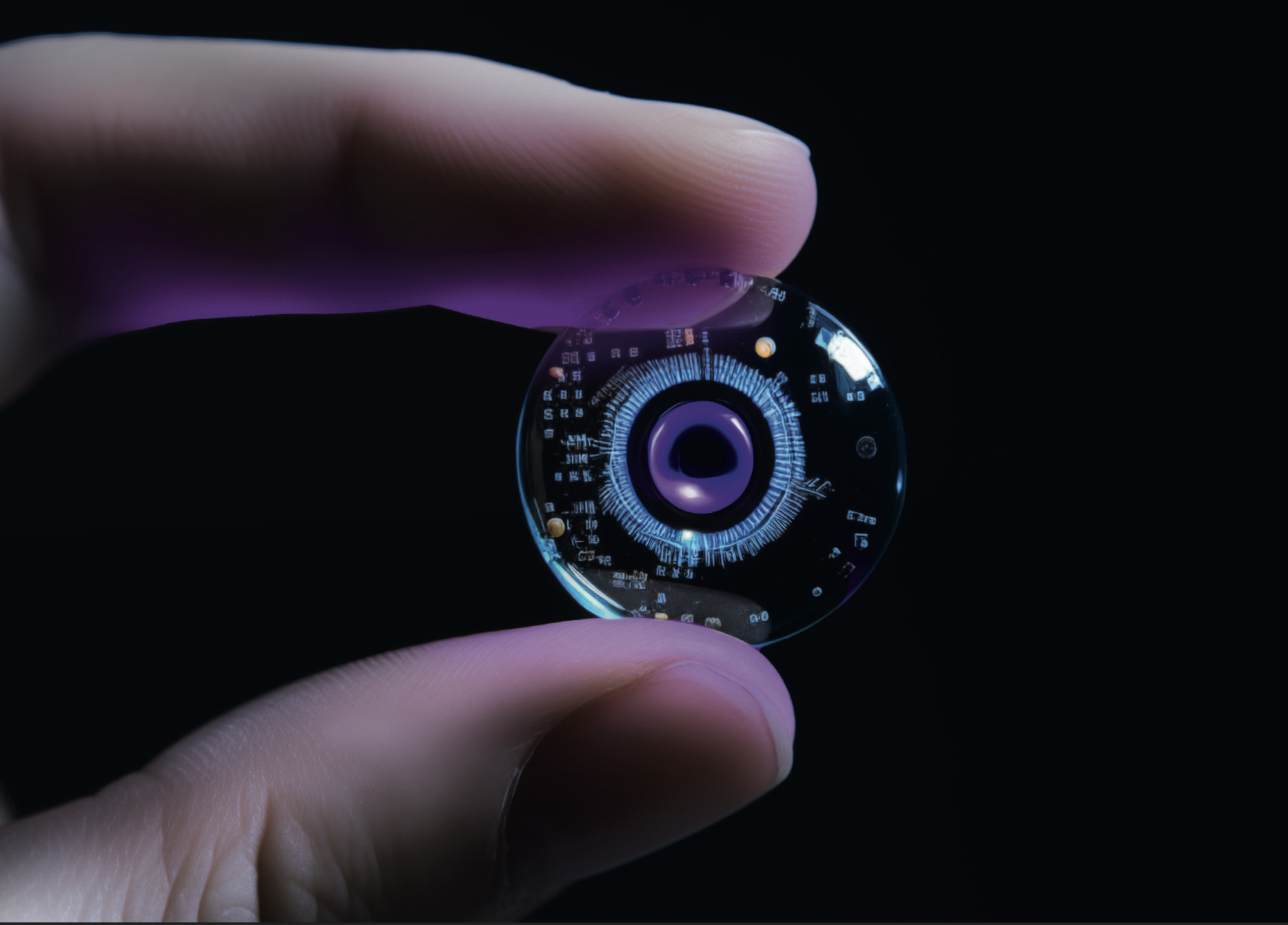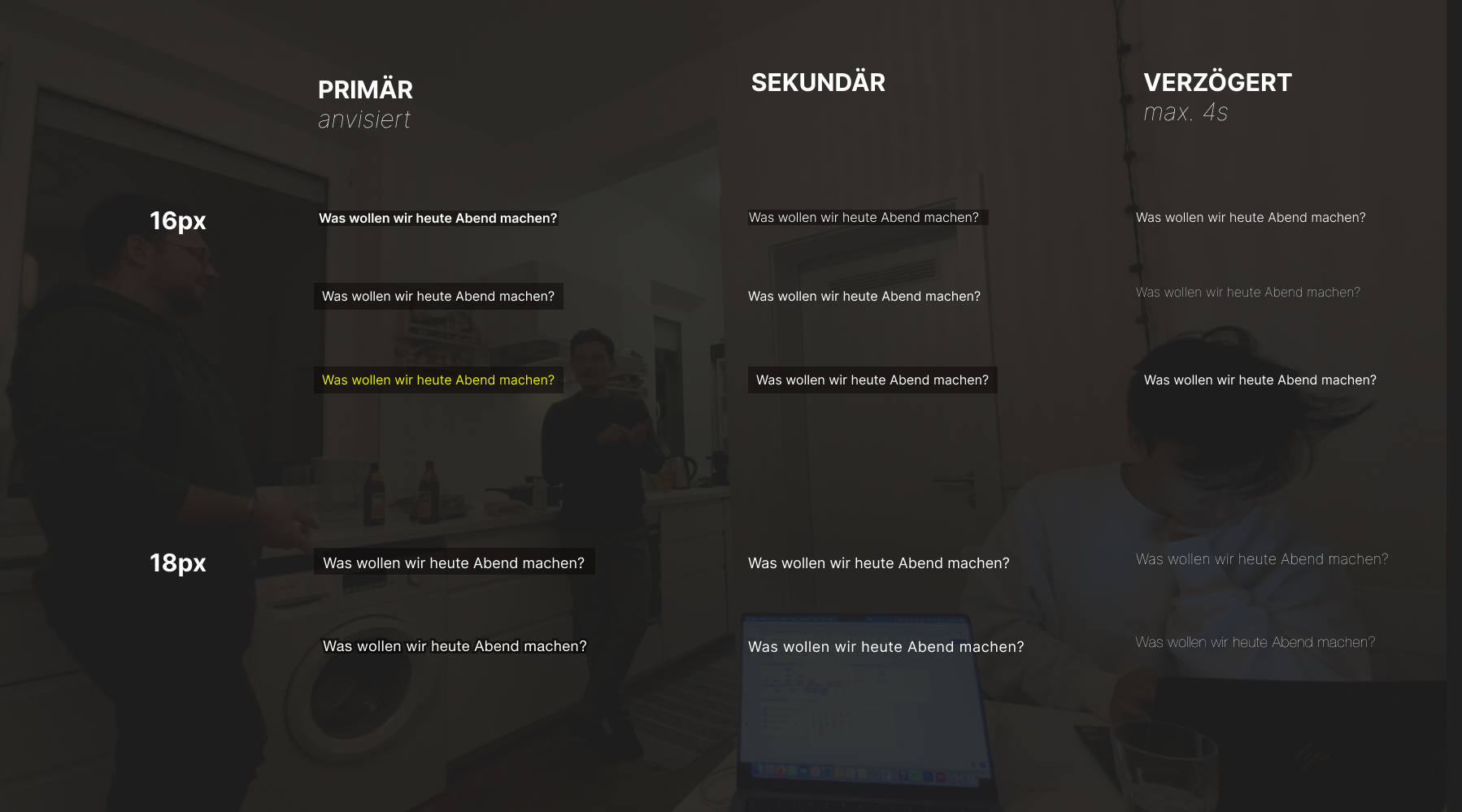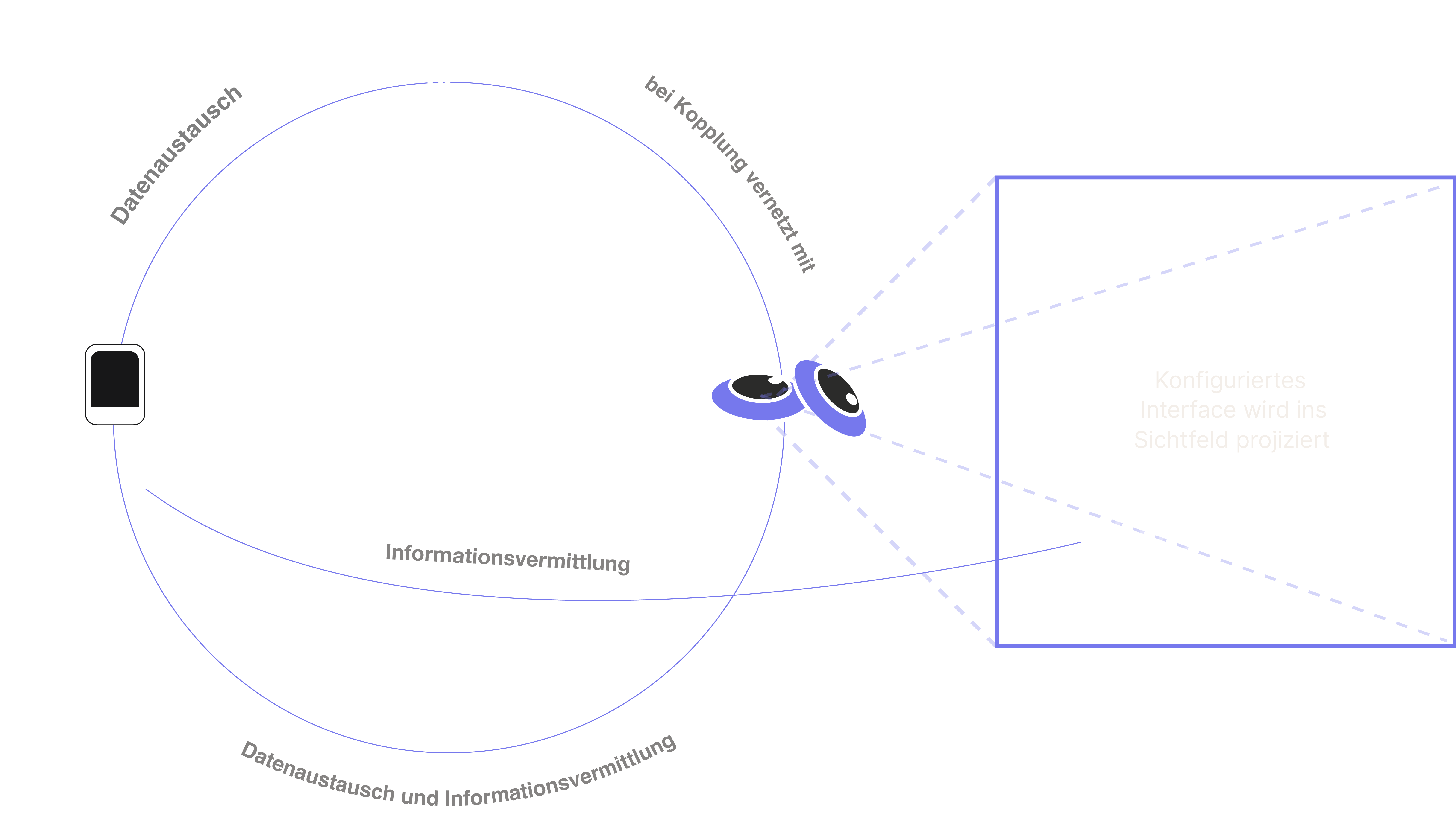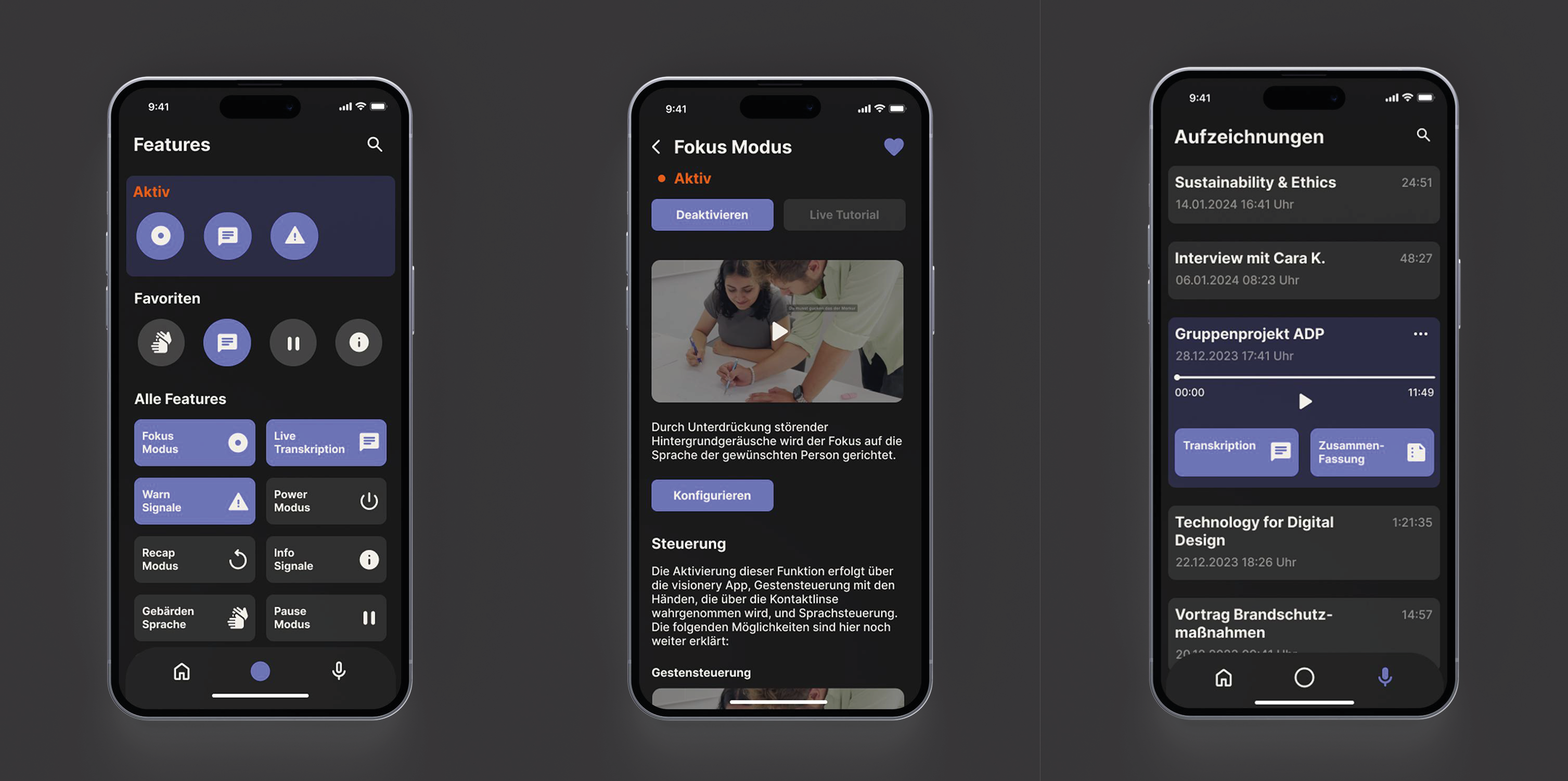Visual communication system for hearing-impaired people
project name
Visionery
2024 — Digital Health System

tools
Figma
After Effects
Illustrator
ChatGPT
Paper
Pencil
Tasks
Research
Concept
Animation
team
Paula Natter
Overview
The VISIONERY project is a digital aid for hearing-impaired people, designed to solve problems faced by hearing-impaired individuals and make their everyday lives easier. Auditory signals are communicated within a visual system.Problem
The integration of hearing-impaired people into our society is not only a matter of fairness, but also an enrichment for us all. Most of our communication is acoustic. But all too often, the needs of hearing-impaired people are overlooked or ignored. This integration requires not only understanding, but also concrete measures to break down barriers. In today's world, which relies heavily on acoustic communication, it is essential to promote technologies and approaches that enable hearing-impaired people to participate.Process
The biggest challenge in addressing this issue was to understand the clinical picture, which is very complex. With this particular target group, it was therefore essential to talk to those affected about their obstacles in person. Only after a detailed analysis of the clinical picture could the choice of media be made. Information can be communicated through various channels, for example auditory, visual or haptic. The decision to present the everyday aid visually was made during the process analysis and based on the advantages and disadvantages of the various media. The idea of a smart contact lens was intended, among other things, to increase the innovation factor and avoid the need for those affected to learn new habits. The personas in this project already possess the necessary soft skills, such as reading. Accessible subtitles play a crucial role in ensuring inclusive and accessible media consumption. Accessible subtitles enable people with hearing impairments to fully access audiovisual material by presenting spoken content in written form. This includes, among other things, the legibility and visibility of the projected content. Despite recommendations for established practices, the correct choice of elements had to be tested in real space.
Accessible subtitles play a crucial role in ensuring inclusive and accessible media consumption. Accessible subtitles enable people with hearing impairments to fully access audiovisual material by presenting spoken content in written form. This includes, among other things, the legibility and visibility of the projected content. Despite recommendations for established practices, the correct choice of elements had to be tested in real space.
Solution Approach
 Vision lenses are an innovative type of contact lens
that are inserted like conventional lenses. However, they incorporate
micro-LED technology, which requires battery power.
Once inserted, the field of vision is automatically initialised, and pre-selected features and configurations can be set via a smartphone app. These settings are projected directly into the field of vision without any additional steps. The Vision lenses are easily controlled via gestures or manually via
the smartphone app, allowing for smooth adjustment to individual needs throughout the day.
Vision lenses are an innovative type of contact lens
that are inserted like conventional lenses. However, they incorporate
micro-LED technology, which requires battery power.
Once inserted, the field of vision is automatically initialised, and pre-selected features and configurations can be set via a smartphone app. These settings are projected directly into the field of vision without any additional steps. The Vision lenses are easily controlled via gestures or manually via
the smartphone app, allowing for smooth adjustment to individual needs throughout the day.
